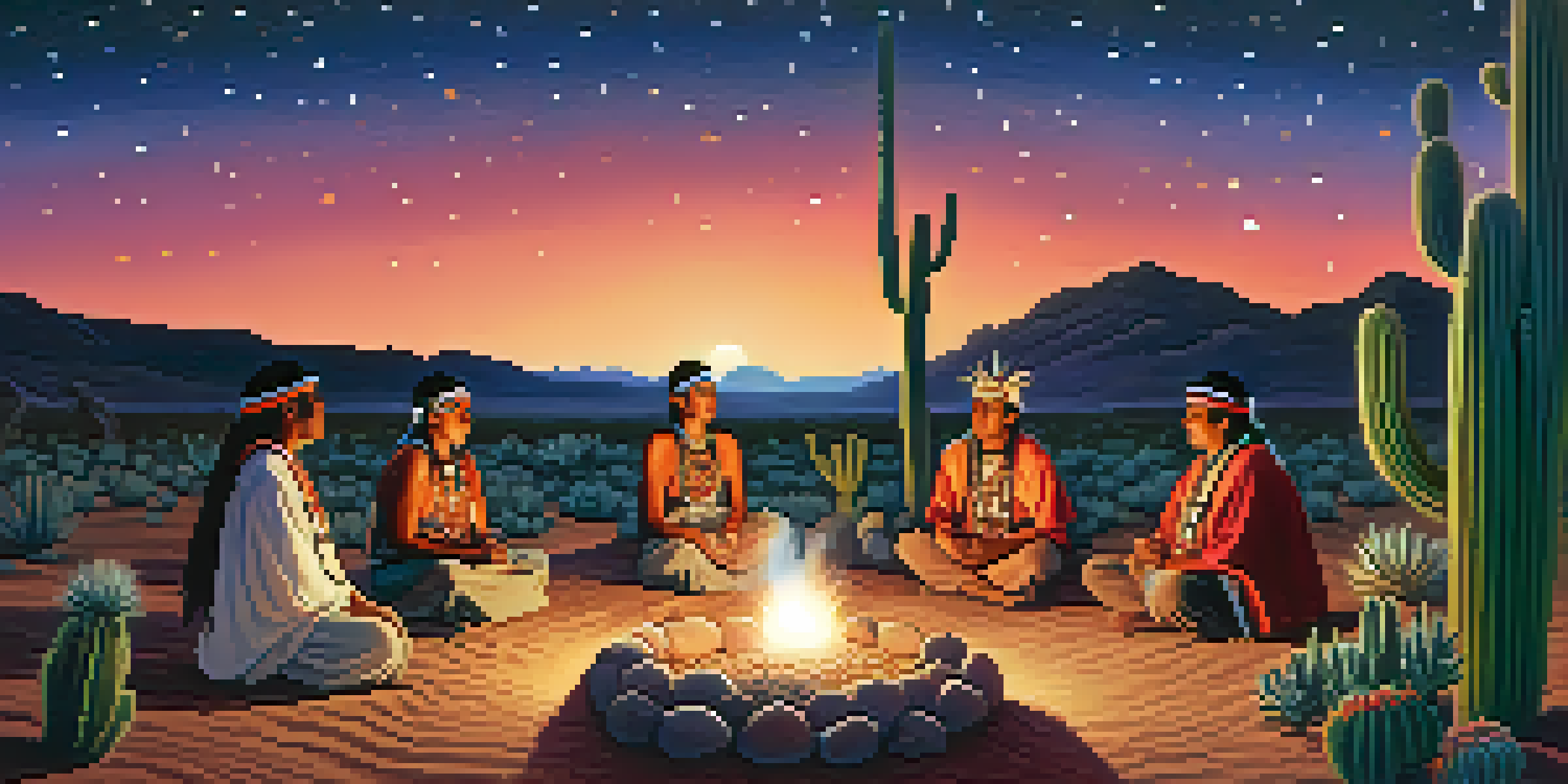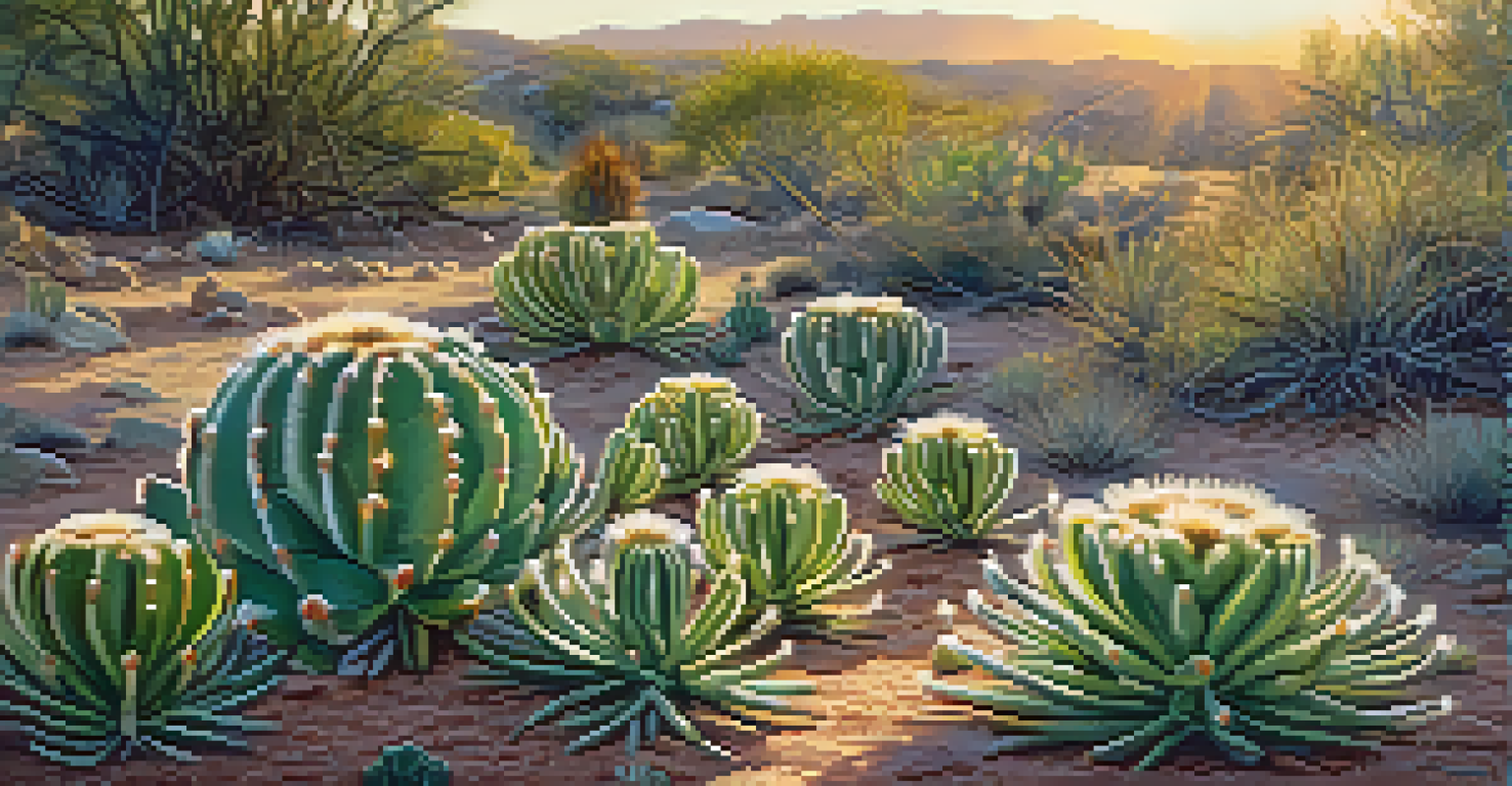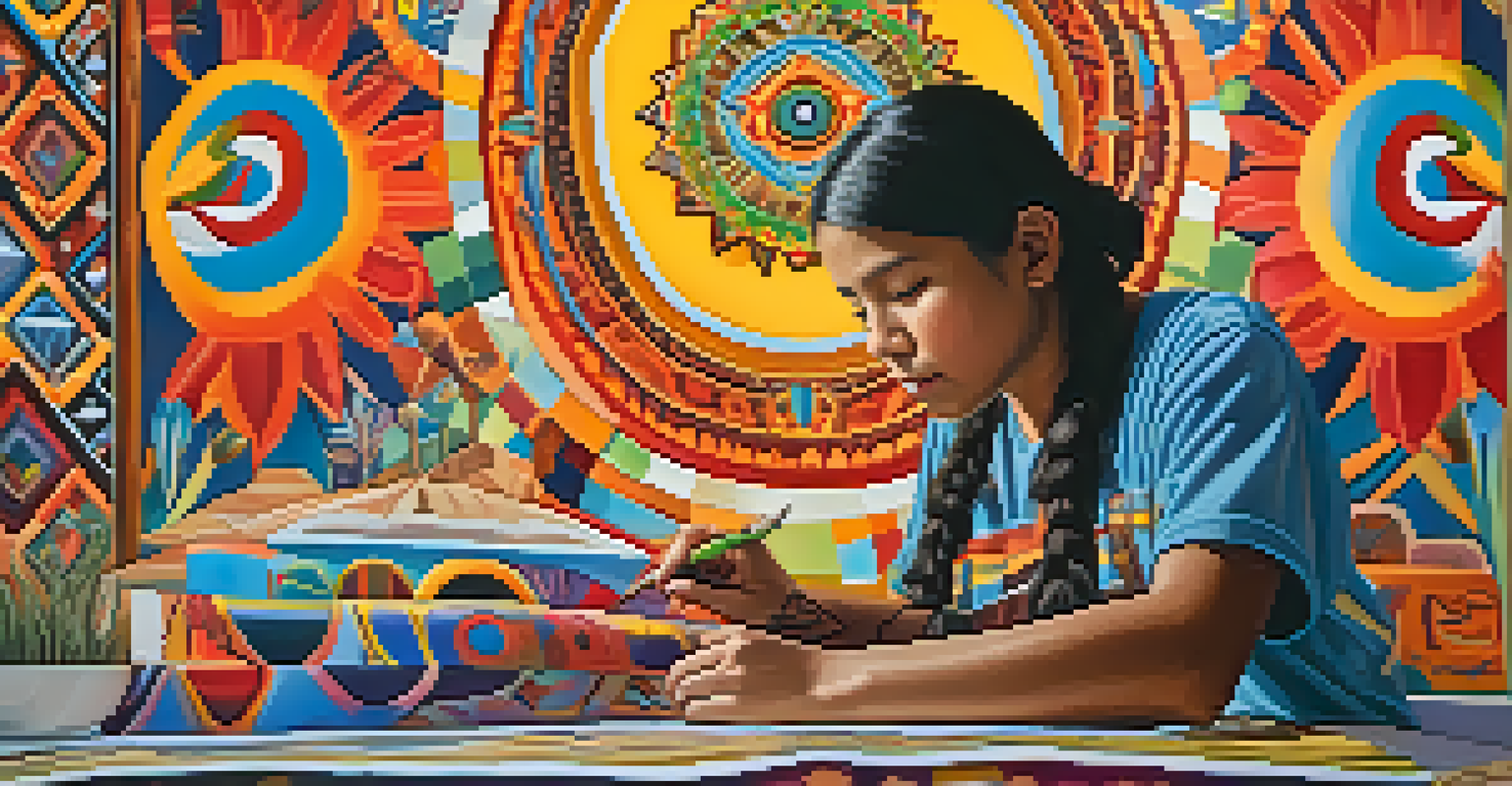Cultural Resilience: Peyote in Indigenous Spiritual Traditions

Understanding Peyote: A Sacred Plant in Indigenous Cultures
Peyote, a small cactus native to North America, holds significant spiritual importance for many Indigenous peoples. This plant is not just a hallucinogen; it is a vital element in ritual practices and cultural identity. For tribes like the Huichol and the Navajo, peyote is seen as a connection to the divine, offering insights and healing.
Peyote is a powerful teacher, guiding us through the mysteries of our existence and connecting us to the spiritual world.
Traditionally, peyote is consumed during ceremonial gatherings, where its psychoactive properties facilitate deep spiritual experiences. Participants often report profound visions and a sense of unity with nature and their community. These experiences reinforce shared beliefs and traditions, making peyote a cornerstone of cultural resilience.
Moreover, the rituals surrounding peyote consumption are laden with teachings that emphasize respect for nature, community bonds, and the importance of ancestry. This not only preserves cultural knowledge but also fosters a sense of belonging among community members, ensuring that traditions are passed down through generations.
The Role of Peyote in Spiritual Practices
In many Indigenous traditions, peyote plays a crucial role in spiritual practices, often serving as a medium for communication with the spiritual realm. During ceremonies, the plant is used to invoke guidance, healing, and clarity, helping participants navigate life's challenges. This connection to spirituality is a vital aspect of cultural identity.

The rituals associated with peyote consumption are diverse, varying from tribe to tribe, but they all share a common goal: to foster healing and personal growth. For instance, the Native American Church utilizes peyote in its ceremonies as a means of spiritual awakening and community support. This practice not only aids individual healing but also strengthens collective identity.
Peyote's Cultural Significance
Peyote serves as a vital spiritual and cultural element for Indigenous communities, reinforcing their identity and traditions.
Through these spiritual practices, peyote serves as a reminder of the resilience embedded within Indigenous cultures. By upholding these traditions, communities can withstand external pressures and maintain their unique identities, showcasing the strength of their cultural heritage.
Cultural Resilience: A Response to Historical Trauma
Cultural resilience is essential for Indigenous communities, particularly in the wake of historical trauma such as colonization and forced assimilation. Peyote rituals provide a means to reclaim and reinforce cultural identity in a world that has often marginalized these traditions. This reclamation is vital for healing and empowerment.
The use of peyote in ceremonies is a vital link to our past and a bridge to our future.
By participating in peyote ceremonies, individuals confront their past and foster a sense of pride in their heritage. The communal aspect of these gatherings reinforces social ties, creating a support system that is critical for resilience. Through shared experiences, participants strengthen their cultural bonds, making it easier to navigate contemporary challenges.
Additionally, the ongoing practice of peyote rituals serves as an act of resistance against cultural erasure. By maintaining these traditions, Indigenous communities affirm their existence and significance in a society that has frequently overlooked them, showcasing the power of resilience in the face of adversity.
Legal and Social Challenges Surrounding Peyote Use
Despite its significance, the use of peyote faces numerous legal and social challenges, particularly in the United States. The psychedelic properties of peyote have led to misconceptions and stigma, often resulting in restrictions on its use. This legal landscape creates barriers for Indigenous communities who rely on the plant for spiritual practices.
Furthermore, there are ongoing debates about the preservation of peyote habitats due to environmental degradation and overharvesting. As demand for peyote increases, it poses a threat to the plant's sustainability, as well as the traditions that depend on it. This situation calls for advocacy and education to protect both the plant and Indigenous practices.
Challenges Facing Peyote Use
Legal and environmental challenges threaten the sustainability of peyote and the cultural practices that depend on it.
Navigating these challenges requires a collective effort to raise awareness about the cultural significance of peyote. By fostering understanding and respect for Indigenous traditions, we can work towards creating a more supportive environment for the continued practice of these essential rituals.
Peyote in Contemporary Indigenous Identity
In today's world, peyote remains a powerful symbol of Indigenous identity and resilience. As communities adapt to modern challenges, they continue to embrace peyote rituals as a way to connect with their ancestry and heritage. This practice is not merely a relic of the past; it is a living tradition that evolves while maintaining its core significance.
Young Indigenous people are increasingly seeking out these traditions as a means of understanding their cultural roots. By participating in peyote ceremonies, they forge a deeper connection to their heritage, fostering pride and continuity within their communities. This generational transfer of knowledge is essential for cultural survival.
Additionally, contemporary Indigenous artists and leaders often draw inspiration from peyote and its associated traditions, incorporating these themes into their work. This fusion of old and new illustrates the dynamic nature of Indigenous identity, showcasing how peyote can inspire creativity while reinforcing cultural foundations.
The Importance of Education and Advocacy
Education and advocacy play crucial roles in ensuring the preservation of peyote and its associated traditions. By informing the public about the cultural significance of peyote, we can combat stereotypes and foster a greater appreciation for Indigenous practices. This understanding helps to dismantle barriers and promote respect for these communities.
Advocacy efforts are essential for protecting the rights of Indigenous peoples to practice their traditions, including the use of peyote. Organizations dedicated to this cause work tirelessly to address legal challenges and promote sustainable practices. Their efforts highlight the importance of preserving not just the plant, but the cultural heritage it represents.
Future of Peyote Traditions
The future of peyote rituals will depend on Indigenous communities' ability to adapt while preserving their core cultural values.
By supporting these educational and advocacy initiatives, we contribute to a broader movement for social justice and cultural preservation. This collective effort ensures that future generations can continue to experience the spiritual and cultural benefits that peyote provides, fostering resilience and identity in an ever-changing world.
Looking Forward: The Future of Peyote in Indigenous Cultures
As we look to the future, the role of peyote in Indigenous cultures will likely continue to evolve. Ongoing discussions about sustainability, legality, and cultural significance will shape how these traditions are practiced. It’s essential to remain adaptable while honoring the core values that peyote represents.
The increasing interest in holistic health and traditional medicines may also lead to a resurgence in the appreciation of peyote. As more people recognize the plant’s spiritual and healing properties, there may be opportunities for broader dialogue about its significance within Indigenous cultures. This could foster greater respect and understanding between communities.

Ultimately, the future of peyote lies in the hands of Indigenous peoples themselves. Empowering these communities to lead the conversation about their traditions ensures that the practices surrounding peyote remain authentic and meaningful, allowing them to thrive for generations to come.